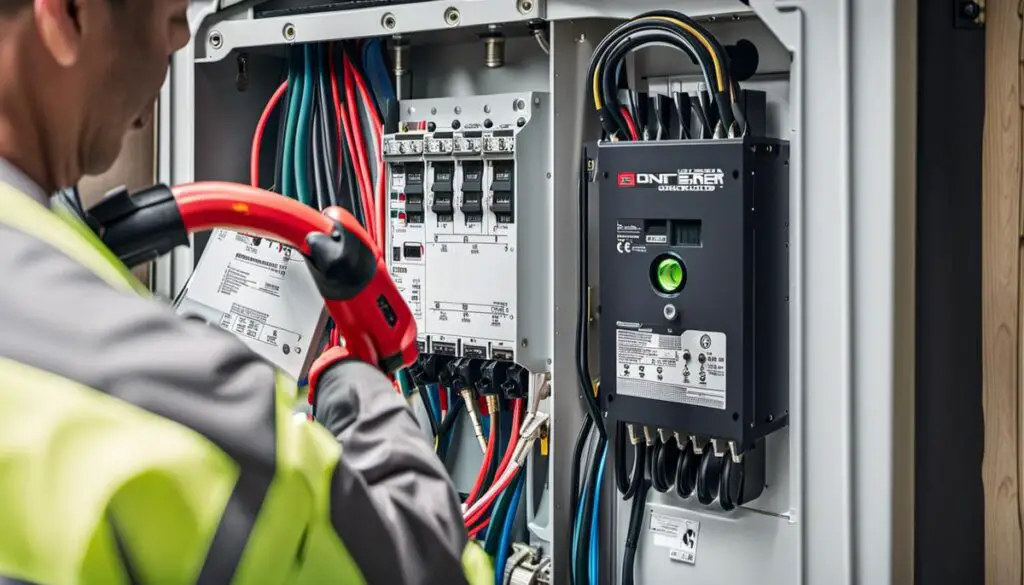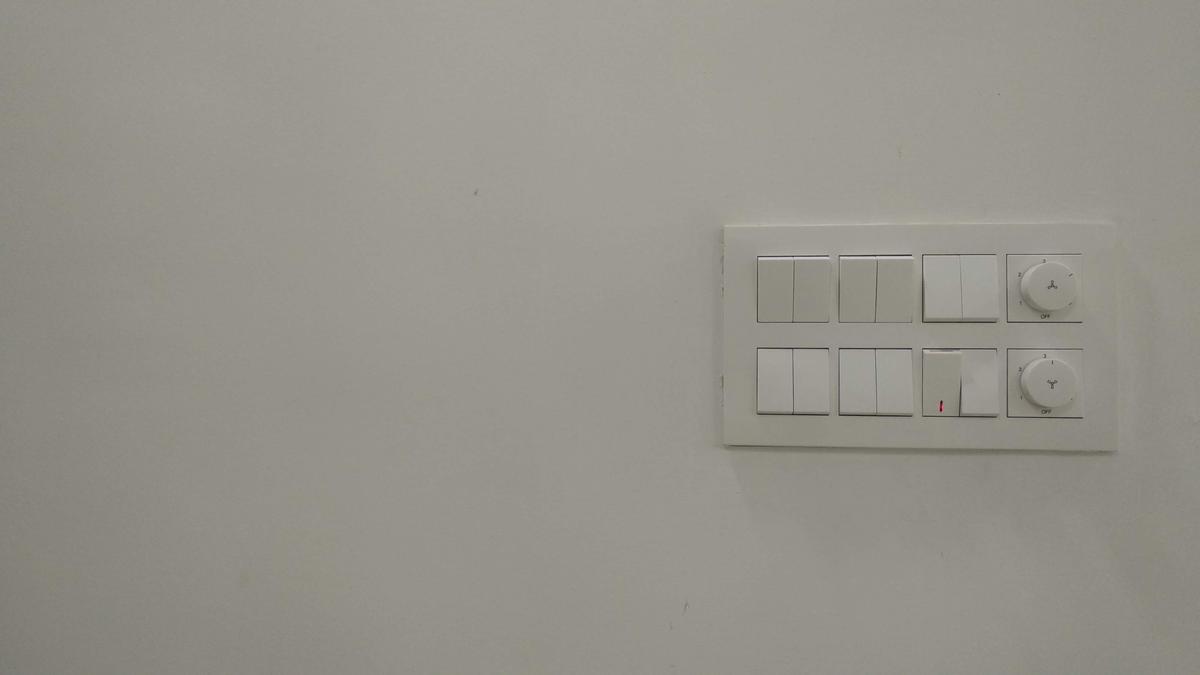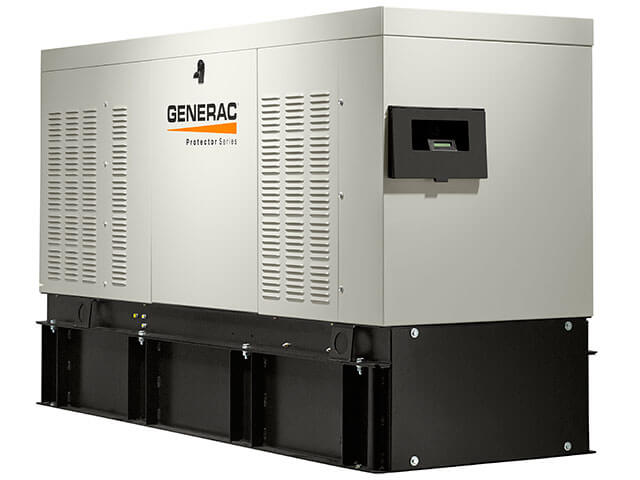As an Amazon Associate, we earn from qualifying purchases. This does not affect the price you pay or the quality of the products you buy. For more information, please read the full affiliate disclosure here.
The necessity of having steady, reliable power in our homes and workplaces has drawn the necessity to install a backup power source such as a generator.
However, to seamlessly switch from the main power supply to your generator in a power outage, you’ll need a solid understanding of generator transfer switches.
This guide shines a light on generator transfer switches, their types, how they work, and the costs involved in their installation. In addition, the guide offers an objective comparison of the costs and logistics of DIY vs. professional installations.
Armed with this knowledge and the latest data on market pricing, you will be better positioned to make an informed decision on installing a generator transfer switch.
Understanding Generator Transfer Switches

Generator transfer switches play a crucial role in the operation of standby generator systems. A generator transfer switch is an electrical device that switches a load between two sources, usually between utility power and generator power.
In simpler terms, this device ensures your household appliances can safely switch from their regular power source to the backup generator in case of a power outage.
Trouble with your generator? Get expert personalized troubleshooting tips tailored for you alone directly to your email. Contact us now for reliable support and practical solutions. Let’s fix it together – reach out today!
How Generator Transfer Switches Work
For a basic understanding of how generator transfer switches work, let’s imagine a scenario of a power outage. When the outage happens, your generator transfer switch will detect the loss of utility power. It then signals your generator to start operating.
Once the generator is ready, the transfer switch will shift the power from the utility to the generator. When regular power is restored, the process is reversed, with the switch transferring power back to the utility source and instructing the generator to stop.
Types of Generator Transfer Switches
Generally, there are two types of generator transfer switches: manual and automatic.
Manual Transfer Switches
Manual transfer switches are typically used for portable generators. These switches require your direct intervention when the power goes out. You must manually shift the power from the utility to the generator, and vice versa when the power is restored.
Automatic Transfer Switches
On the other hand, automatic transfer switches are used for permanent standby generator systems. They do not require manual operation. Upon detecting a power outage, they automatically switch power to the generator and shift it back when the utility power returns.
Costs and Labor Involved in Installing Generator Transfer Switches
The costs to install a generator transfer switch can vary widely depending on the type of switch and the complexity of the installation.
For a manual transfer switch, the average cost, including labor, can range from $200 to $400. Automatic transfer switches, due to their advanced features and complex installation process, are more costly. The installation can range from around $300 to $1000 or even more depending on the capacity and specifications of your generator.
The labor involved in installing a transfer switch can also significantly affect the total cost. The installation usually requires the expertise of a licensed electrician due to the dealing with high voltage systems and adherence to local codes and regulations. The labor cost can range from $70 to $100 per hour, and the installation can take anywhere from 3 to 6 hours depending on the complexity of the work.
DIY vs. Professional Installation Costs

Photo by heerenaway on Unsplash
DIY Installation of Generator Transfer Switch: Cost and Skill Level
When you decide to install a generator transfer switch yourself, you’ll undoubtedly save money on labor costs. Depending on your location, professional installations can range from $200 to $400 in labor alone. The cost of a transfer switch itself varies from $400 to $800, depending on the kind, Amps, and brand.
You would need a basic set of tools for a DIY installation. This includes:
- A multimeter
- Wire strippers
- Screwdrivers
- Drill
- And a pair of pliers.
Additionally, you would need electrical and data cable, terminal connectors, and duct seal. Keep in mind that the precise tools required may vary depending on the specific type of transfer switch you’re installing.
Turning to the skill level required, having a basic understanding of your home’s electrical system and knowing how to safely work with electricity is crucial.
The National Electrical Code contains specific safety guidelines that need to be followed when installing a transfer switch. Not following these guidelines could pose danger to yourself and anyone who uses the property. Understanding these guidelines requires some level of electrician training.
Professional Installation of Generator Transfer Switch: Cost and Peace of Mind
Hiring a professional to install a generator transfer switch generally costs more than doing it yourself, but the increased cost can be worth it. Depending on your area, a professional installation can range from $800 to $1,300. This price includes both the cost of labor and the generator transfer switch.
Professional electricians have the training and experience to install a generator transfer switch safely and reliably. They know the National Electrical Code guidelines and can ensure the installation is up to code. This not only ensures the safe operation of the transfer switch but also prevents potential legal issues down the line.
Another advantage of professional installation is time. Depending on their level of expertise and the particular setup of your home’s electrical system, a professional could install a generator transfer switch in a fraction of the time it might take you.
Also Read:- How To Connect Portable Generator To House Without Transfer Switch
DIY vs. Professional: Pros and Cons
Ultimately, the choice between a DIY and professional installation comes down to a balance between cost and comfort. Doing it yourself can save money, but it requires a certain skill level and can take more time. It also carries a risk if you’re not experienced in working with electricity.
On the other hand, hiring a professional costs more, but provides peace of mind. The installation will be completed more quickly, and you’ll have the assurance of knowing it’s done safely and to code.

Market Research on Prices
Price Range for Generator Transfer Switch
In performing market research on the price of generator transfer switches, variety is the word. The price can fluctuate significantly depending on a few factors, including switch size, type, brand, rating, and more.
On the low end, a manual transfer switch can cost anywhere from $50 to $150. Automatic transfer switches, on the other hand, are more complex and therefore tend to be more costly, running from around $300 to $1,400 or more. Premium models can exceed $2,000.
Retailers such as Home Depot, Amazon, Lowe’s, Northern Tool, and Electric Generators Direct offer a broad selection of transfer switches to choose from. Average prices based on these retailers range from $250 to $800.
Average Cost of Professional Installation of Generator Transfer Switch
On top of the cost of the switch itself, you need to factor in the cost of professional installation. This relatively simple process allows a generator to safely feed power into a home’s electrical system. However, it should be performed by a certified electrician or technician to ensure safe and efficient operation.
Installation costs can greatly vary depending on your location, local labor rates, and the specifics of your electrical system. The time it takes to install a transfer switch is usually between 3 to 8 hours. The average hourly rate reported by HomeAdvisor for electricians is about $50 to $100, which would make the installation cost vary from $150 to $800 on average. It’s important to note that this is a rough estimate, and actual costs can be higher or lower.
Therefore, the total cost of your project, including both the switch and installation, could range from $400 to $2,000 or more. It’s highly recommended to get multiple quotes from certified electricians in your area to get a more accurate estimate of the installation cost.
In conclusion, while the above provides a rough guideline, your specific situation may involve different costs. It is always best to shop around and obtain quotes from a few different retailers and service providers to ensure you are getting the best deal possible.

Photo by benhershey on Unsplash
Understanding the Installation Procedure
A generator transfer switch is a vital component of your standby generator system. It works as a bridge between the generator and your house’s electrical system, safely diverting power from the utility source to the generator during an outage. Knowing how to install a transfer switch can save time and ensure your home has a reliable backup power source.
Safety Precautions Before Installation
Electricity can be dangerous, and it’s crucial to prioritize safety when installing a transfer switch. Turn off all power to the home at the main electrical panel. Use a voltage tester to double-check that the power is off. It’s also recommended to wear protective eyewear and gloves. If you’re not comfortable doing this type of work, hiring a licensed electrician would be a smart choice.
Locating the Transfer Switch
The first step in the installation is to determine the location for the transfer switch. It should be installed near the electrical panel with easy access to the breaker box wiring.
Wiring the Transfer Switch
Once the switch is in place, connect it to the circuit breakers of the appliances and systems you want the generator to power in an outage. For instance, these could be your refrigerator, heating system, or lights. Wire the switch according to the manufacturer’s instructions and your local code regulations.
Linking the Generator
Now, connect the generator to the transfer switch using a power cord. Depending upon your type of generator, you may need an outdoor, weatherproof plug for this connection. Some generators also require a grounding wire.
Testing the System
Once installed, test your system. Switch off the main circuit breaker, start your generator, and turn on the transfer switch. Check each of the connected systems or appliances to ensure they are receiving power from the generator. Turn off the generator afterward, and turn back on the main circuit breaker.
Know Your Local Electrical Codes and Regulations
Every state and municipality has different rules and regulations about electrical installations. Some areas may require a professional electrician to perform certain tasks or even the entire job.
Some may also require a building permit, an electrical permit or an inspection after the work is completed. Be sure to check with your local building department or a qualified electrician to know what regulations apply to you.
The video below explains the installation process better.
Why Hiring a Professional?
Consumer-grade switches are relatively straightforward to install, but if you’re dealing with heavy-duty, complex systems, it’s wise to hire a professional. The cost for installing a transfer switch can range from $250 to $800 for labor, depending upon the complexity and time spent. It’s a wise investment to get the work done correctly and safely. Picking a reputable and licensed electrician ensures that the installation is done per all safety norms and local rules.
Final Thought
Understanding every facet of generator transfer switches, from its working principle to its installation procedure lays a firm foundation for anyone seeking to install one. With insights into the pros and cons of both DIY and professional installation, you can evaluate your personal situation to decide on the best course of action.
By committing to conduct thorough market research, you ensure that you get the best value for your investment. Additionally, knowing the local codes and regulations regarding electrical installations ensures the safe installation and operation of your generator transfer switch. It is hoped that this knowledge will ease your transition from being a general member of the public to a savvy consumer, better equipped to handle power backup solutions.
Share

